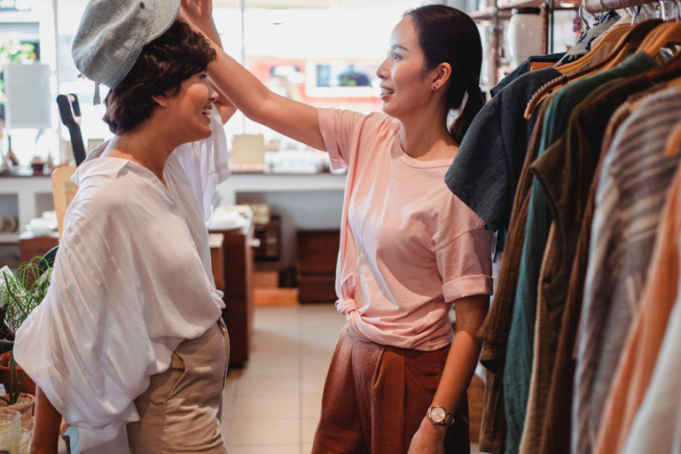As we dive into the rapidly evolving world of e-commerce, it’s clear that the future is promising, innovative, and full of potential. A significant element of this is the rise of virtual fitting rooms and style assistants. These technological advancements are poised to redefine the customer experience, streamline operations, and propel online retail to unprecedented heights.
What is a Virtual Fitting Room?
A virtual fitting room is a digital solution that allows shoppers to try out clothing, accessories, and even makeup virtually before deciding to make the purchase. These online try-on rooms use either augmented reality (AR) or artificial intelligence (AI) to offer a realistic visualization of how a product would look on the buyer.
Traditionally, the inability to try on products has been a major pain point in e-commerce. However, virtual fitting rooms have stepped in to bridge this gap, leading to lower return rates and greater customer satisfaction.
The Importance of Virtual Fitting Rooms in E-commerce
Enhanced Shopping Experience
By allowing customers to virtually try on items, e-commerce businesses provide a shopping experience that is both entertaining and practical. Customers can have the convenience of shopping from the comfort of their own home, yet still enjoy a crucial aspect of the physical shopping experience – the fitting room.
Reduction in Return Rates
Return rates for online purchases have historically been much higher than for in-store purchases, largely due to sizing issues. Virtual fitting rooms can drastically reduce this by providing customers with a realistic preview of how the item will look and fit, leading to more accurate purchases and fewer returns.
The Advent of Style Assistants
A digital style assistant is an AI-powered tool that offers personalized style recommendations to shoppers. By analyzing a user’s previous purchases, browsing history, and other data, these digital assistants provide highly personalized shopping suggestions that match the user’s unique style and preferences.
How Digital Style Assistants are Revolutionizing E-commerce
Personalized Shopping Experience
AI-powered style assistants offer a level of personalization that was previously unattainable. They can analyze vast amounts of data in real-time to deliver hyper-personalized product recommendations. This creates a shopping experience tailored to each individual customer, making them feel valued and understood.
Increased Conversion Rates
Style assistants not only enhance the customer experience but also increase conversion rates. By providing relevant product suggestions, they can motivate customers to make purchases they might not have considered otherwise.
Integrating Virtual Fitting Rooms and Style Assistants
The combination of virtual fitting rooms and style assistants is a match made in digital retail heaven. As customers receive personalized product recommendations from style assistants, they can immediately try these items on in the virtual fitting room.
This integration amplifies the benefits of both technologies. It delivers an exceptional, engaging shopping experience, encouraging customers to make confident purchases and reducing the likelihood of returns.
Challenges and Solutions
While these technologies hold great promise, they also come with their fair share of challenges. For instance, creating a virtual fitting room that accurately represents an individual’s body type and accurately depicts clothing fit and drape can be technically demanding.
Furthermore, privacy concerns may arise as style assistants require access to personal data to offer customized recommendations. Businesses need to ensure they follow best data protection practices and communicate this clearly to their customers.
However, with ongoing technological advancements and increased awareness about data security, these challenges are being steadily addressed, making the future of virtual fitting rooms and style assistants in e-commerce incredibly bright.
Extending Virtual Fitting Rooms to Eyewear
Interestingly, the realm of virtual fitting rooms isn’t limited to clothing, accessories, and cosmetics. The innovation is extending its influence over the eyewear industry too, allowing customers to virtually try on glasses.
The Power of Augmented Reality in Eyewear Shopping
With the utilization of augmented reality, eyewear e-commerce platforms now provide a tool to their customers where they can select a pair of glasses, and virtually try them on. The user’s face is captured using the device’s camera, and the selected eyeglasses are superimposed onto the user’s image in real-time.
This virtual try-on (VTO) technology enables users to see how different frames, colors, and sizes suit their face shape. This development is especially beneficial considering the highly personalized and individual nature of eyewear, where the correct size, fit, and style are essential for comfort and satisfaction.
Benefits to Customers and Businesses
This technological development can be transformative for both customers and businesses. From the customer’s perspective, it makes online eyewear shopping much less risky and more enjoyable. They can try on multiple frames within minutes without leaving their home, which can lead to better buying decisions and increased satisfaction.
For businesses, it helps them stand out in the highly competitive e-commerce space. Offering such an innovative and helpful feature can attract more customers, reduce return rates, and ultimately drive sales growth.
Pioneering Virtual Try-Ons in the Eyewear Industry
One company leading the charge in the integration of virtual fitting rooms into the eyewear sector is GlassesUSA. Their platform enables customers to try on glasses online through GlassesUSA’s interactive website. This feature, powered by augmented reality, provides users with the opportunity to ‘wear’ various eyewear styles without leaving the comfort of their homes.
GlassesUSA’s virtual try-on technology captures the user’s face via the device’s camera. Then, it superimposes the selected eyeglasses onto the user’s image in real-time, replicating a physical try-on experience. Users can see how different frames, colors, and sizes would look on their face shape, thereby enabling them to make more informed decisions.
The Road Ahead
In the world of e-commerce, the future is all about personalization and immersive experiences. Virtual fitting rooms and style assistants are at the forefront of these developments, offering solutions that are changing the face of online shopping.
These technologies have already started to reshape the customer experience, with a number of forward-thinking retailers already implementing these tools to great success. As more businesses adopt these innovative solutions, and as technology continues to evolve, we can expect the e-commerce landscape to become even more customer-centric and interactive.
The future of e-commerce is exciting and full of potential, and it’s clear that virtual fitting rooms and style assistants will be key players in this future. While the road ahead may present challenges, the rewards for businesses and consumers alike make this a journey worth embarking on.



















